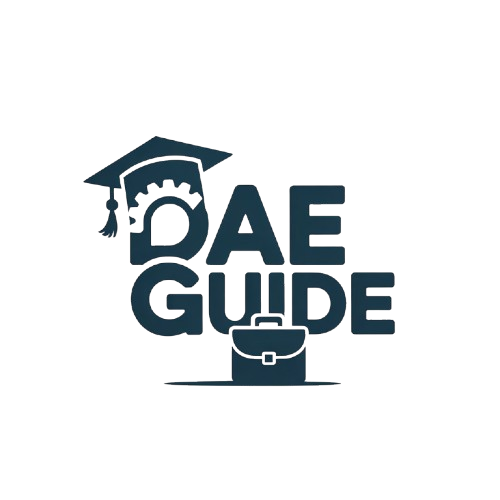Impact of LinkedIn on Job Hunting and Hiring
Impact of LinkedIn on Job Hunting and Hiring
LinkedIn
has transformed the way people search for jobs and how companies find talent.
It connects professionals directly, speeds up the hiring process, and makes
both job seekers and employers more visible in the market.
Impact on Job
Hunting
LinkedIn has become an essential
tool for anyone looking to advance their career or find new opportunities. It
allows job seekers to present their professional identity in a credible and
visible way.
Builds your
professional brand
Your LinkedIn profile acts as your personal brand. You can highlight your
experience, education, skills, and achievements. Regular posts, articles, and
comments on industry topics help you show expertise and stay visible in your
field.
Connects you
with recruiters and decision-makers
LinkedIn gives you direct access to hiring professionals. Recruiters often
reach out to candidates through LinkedIn based on skill matches. It also lets
you message company leaders or hiring managers, something traditional job
portals don’t offer.
Simplifies
job applications
Many companies allow you to apply directly through LinkedIn. Your profile
serves as your resume, so you save time filling out long forms. Recruiters can
also review your full professional background instantly.
Offers
networking insights
LinkedIn shows who viewed your profile or engaged with your posts. This helps
you identify people interested in your work or industry, making it easier to
start meaningful professional conversations.
Keeps you
informed about companies
By following organizations, you can track their latest updates, job openings,
and workplace culture. This helps you prepare better for interviews and choose
employers that fit your career goals.
Builds
credibility through endorsements and recommendations
Colleagues and supervisors can endorse your skills or write recommendations.
These act as public references, strengthening your professional reputation and
trustworthiness.
Impact on Hiring
LinkedIn has become one of the
most powerful tools for modern recruitment. It helps companies find qualified
professionals faster, build brand visibility, and make better hiring decisions.
Access to a
global talent pool
Recruiters are no longer limited by geography. LinkedIn gives them access to
millions of professionals across industries and countries. This allows
companies to find skilled candidates for both local and remote roles, expanding
their reach beyond traditional hiring channels.
Targeted
candidate search
LinkedIn’s advanced filters let recruiters narrow down candidates by job title,
years of experience, education, skills, and even current or past employers.
This saves time and ensures the right candidates appear at the top of searches.
Many recruiters also use LinkedIn’s premium tools, like Recruiter Lite, to
streamline outreach and communication.
Reduced
reliance on traditional ads and job boards
Companies no longer depend only on newspaper ads or external job sites.
LinkedIn lets employers post jobs directly, promote them to the right audience,
and receive applications instantly. It also reaches passive candidates professionals
who are not actively applying but may be open to the right opportunity.
Simplified
background verification
LinkedIn profiles display career history, education, mutual connections, and
endorsements. This transparency helps recruiters verify information quickly
before interviews. Mutual connections often act as informal references, giving
additional credibility to candidates.
Stronger
employer branding
A company’s LinkedIn presence influences how potential candidates view it.
Regular updates about company culture, achievements, or employee stories build
trust and interest. Well-maintained company pages and employee engagement make
the organization more attractive to job seekers.
Overall, LinkedIn has made the
hiring process more efficient, data-driven, and transparent. It connects
companies with the right talent faster while allowing employers to strengthen
their professional image in the market.
Effective
LinkedIn Strategies
To get the most out of LinkedIn,
both job seekers and employers need to use it strategically. A complete and
active profile builds visibility and credibility, while consistent engagement
strengthens your professional network.
Keep your
profile complete and updated
A strong LinkedIn profile starts with a professional photo, a clear headline,
and a concise summary. Your headline should describe what you do and what value
you offer. Add details about your work experience, education, and key skills. A
complete profile increases your chances of appearing in searches and makes a
strong first impression on recruiters.
Use relevant
keywords
Recruiters search for candidates using specific terms related to skills, job
titles, and industries. Identify common keywords in job descriptions that match
your experience and include them in your headline, summary, and experience
sections. This improves your visibility in search results and helps you reach
the right opportunities.
Join
industry groups
LinkedIn groups allow you to connect with professionals in your field. Joining
active groups give you access to discussions, job updates, and expert advice.
It also helps you build credibility by contributing to conversations and sharing
insights.
Engage
regularly with posts
Consistent activity keeps you visible. Comment on posts, share articles, and
publish your own updates about industry trends or professional experiences.
Engagement shows recruiters that you are active, informed, and serious about
your career. It also increases your reach within your network.
Employers
should share engaging company updates
Companies that post regularly attract more attention from potential candidates.
Sharing updates about new projects, achievements, or employee stories builds
trust and interest. It also helps promote the company culture, which can
influence candidates’ decisions to apply.
Conclusion
LinkedIn
has completely changed the way people find jobs and how companies hire. It
helps professionals showcase their skills, connect with the right people, and
stay visible to employers. For businesses, it makes hiring faster, more
targeted, and more efficient.
To succeed
on LinkedIn, you need to stay active and genuine. Keep your profile updated,
share useful content, and engage with others in your field. Employers should do
the same by posting updates and highlighting their company culture to attract
top talent.
LinkedIn
is no longer just a networking platform. It is a powerful tool for building
careers and finding the right people for the right roles.



